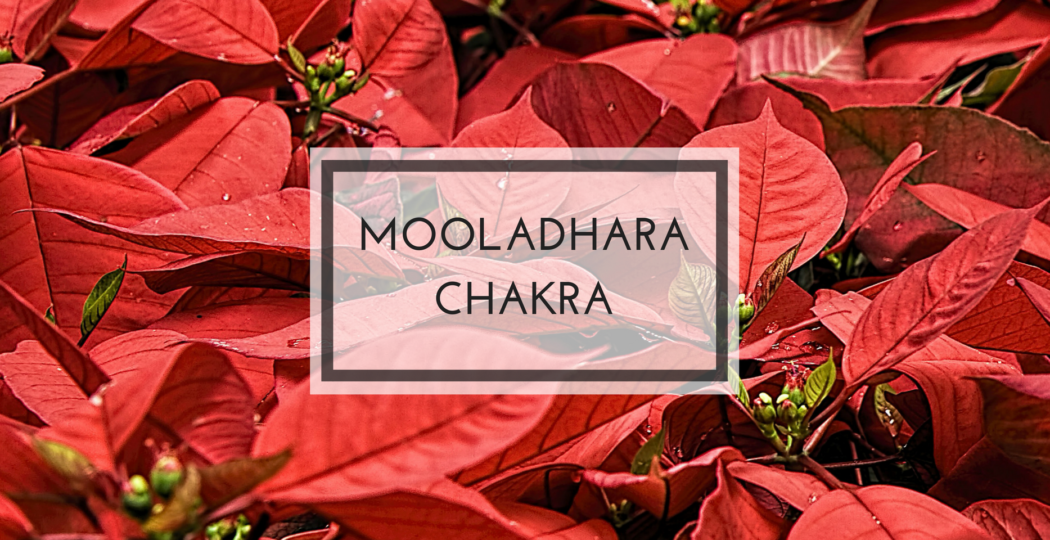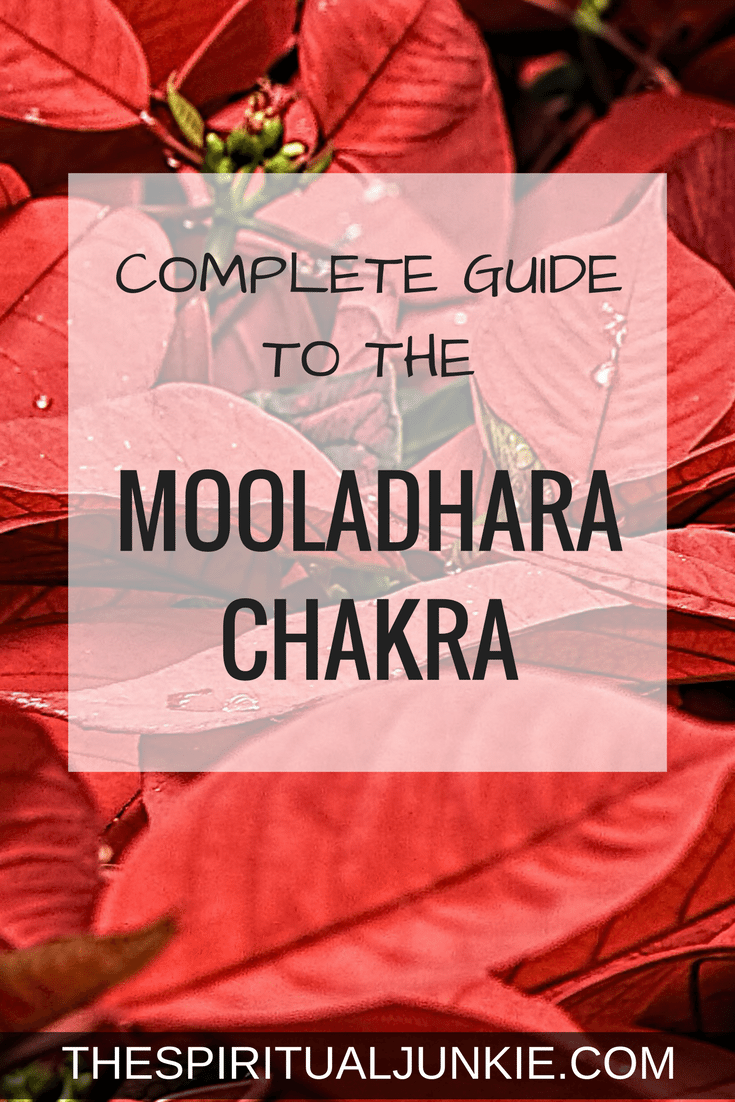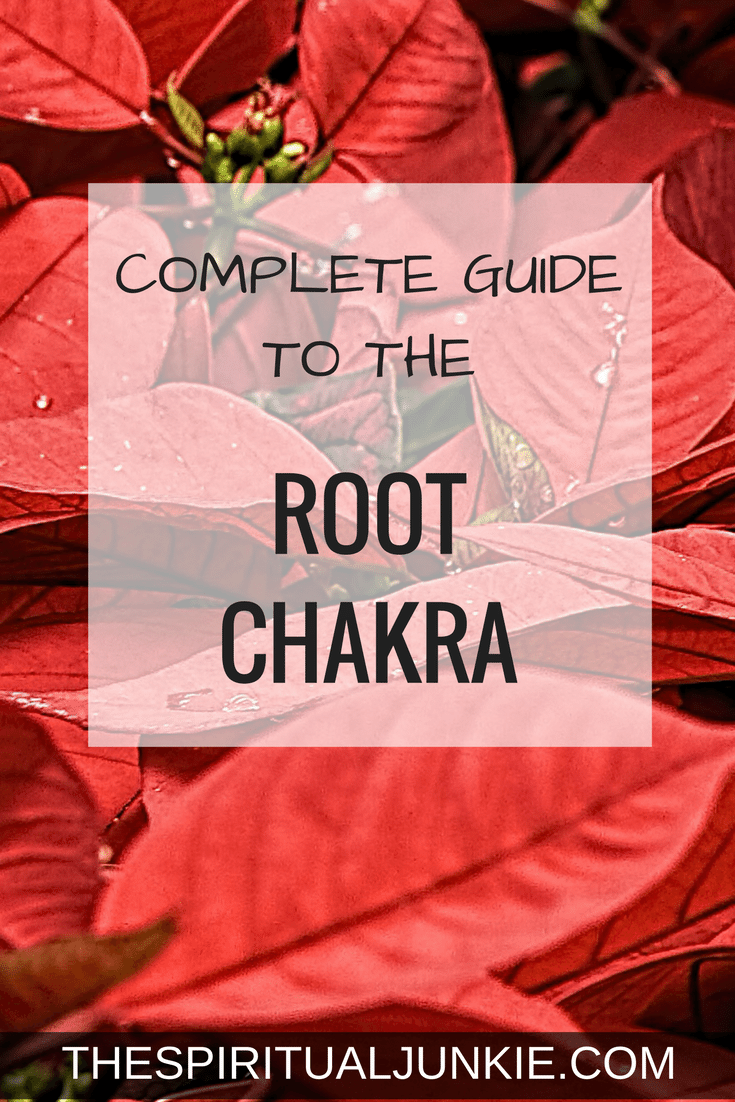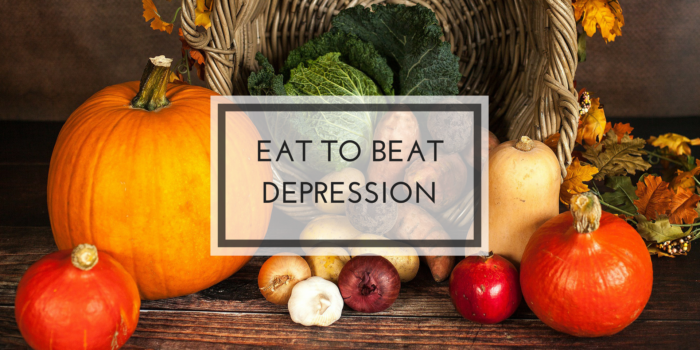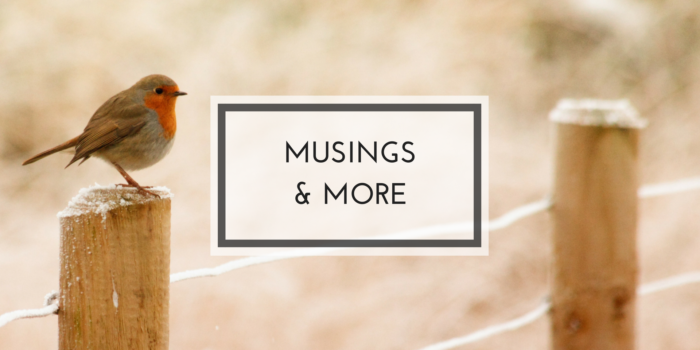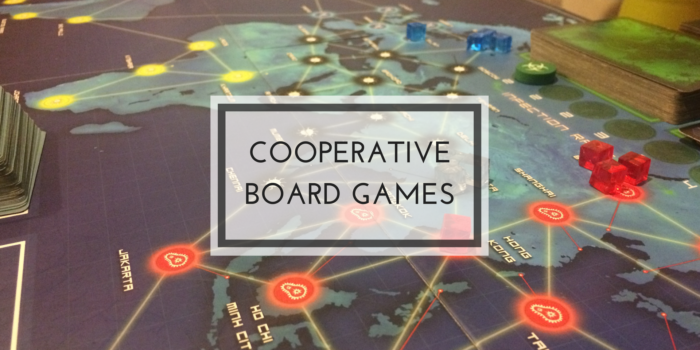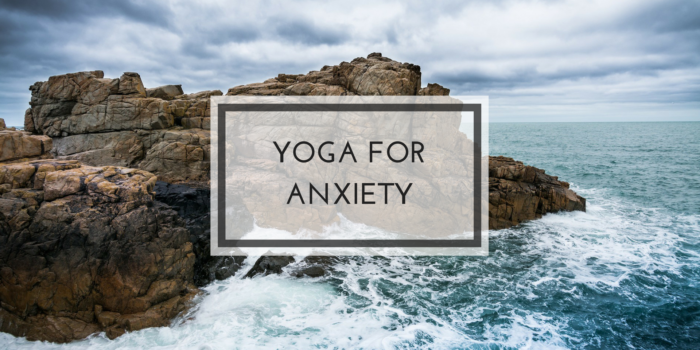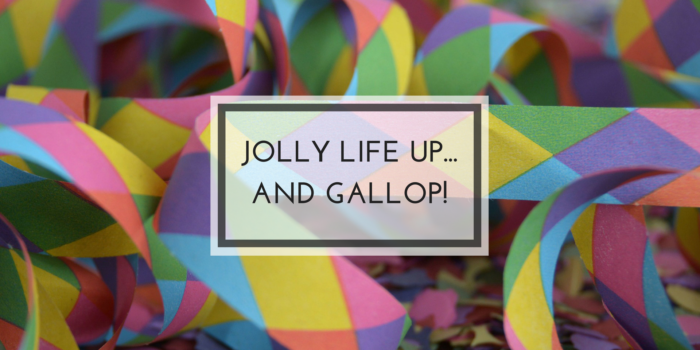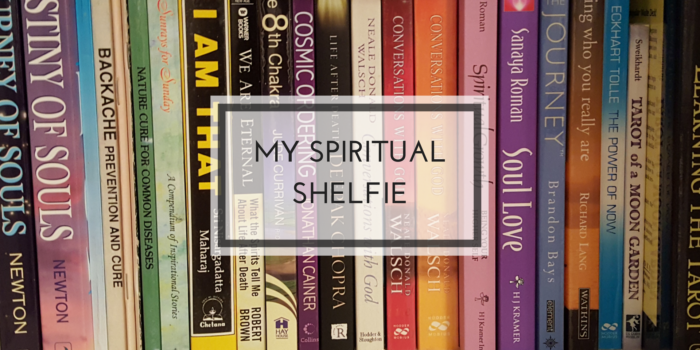Location & Kshetram: In males – in the perineum, close to the anus. In females – at the cervix.
Gland: Testes & adrenals
Plexus: Sacral Plexus
Colour: Red
Sense: Smell
Element: Earth
Organs/ Body Parts: physical body support, base of spine, legs (bones), feet, rectum, immune system
Mental/ Emotional Issues: physical family and group safety and security, ability to provide for life’s necessities, ability to stand up for self, feeling at home, social and familial law and order
Physical Dysfunctions: chronic lower back pain, sciatica, varicose veins, rectal tumors/cancer, depression, immune-related disorders. N.B. Negative extremes of any listed emotional issue can serve as a major influence in the development of any of the noted dysfunctions.
Mooladhara Chakra is at the root of the chakra system and is the foundation upon which all the other chakras stand and upon which every other body system relies for stability. At Mooladhara human evolution begins and kundalini emerges.
The root chakra concerns our foundation or connection to the earth. Influenced by our earliest relationships, the first chakra is the centre of physical energy and vitality. It is the primary source of usable energy, drawn upon in times of danger to supply energy and physical solutions to life-threatening problems. The energy to succeed and make things happen in the material world comes from the root chakra. Centering and grounding are key attributes of the base chakra, establishing us firmly within our physical system, alerting us to the world around us and protecting our energies from depletion.
On a subtle level Mooladhara is the slowest moving chakra and it controls our survival instinct. This, of course, relates to the emotion of fear. When our survival is threatened in some way, we feel the energy of fear. This emotion is nothing more than the arising of energy from the Mooladhara Chakra. It fills us with the alertness and urgency needed to help us to survive. Our whole system goes into over-drive, and our body and mind sharpen into an extraordinary state of awareness. We tend to dislike this experience because of the threat that we associate with it. If, instead, we can learn to recognise the energy of fear instead of identifying with it then we can tap into the energy of the base centre and make it work for us.
If our survival needs are met, the root chakra will function healthily, but if there is a perceived threat, (like health problems, a difficult house move, job change, etc.) it can create an imbalance. Imbalances can manifest themselves in various ways, from sleeplessness and the inability to relax, to an obsession with money, possessions or health.
Eating is a basic root chakra activity, and so eating disorders often indicate imbalance, as do obesity, haemorrhoids and constipation.
To maintain balance, we need to be both stable and flexible, and very much in contact with our true survival needs, without becoming obsessed by them. An ‘everything in moderation’ attitude toward basic needs such as food is helpful.
The root chakra is about being aware of your body completely, about grounding yourself to let the Cosmic and Earth energy flow freely. The root chakra faces down to absorb healing energies from the earth.
In Balance:
When the Mooladhara Chakra is in balance a person walks with a strong step full of confidence and creativity. There is awareness of the impact one has on others and the environment and a desire to act wisely. There is moderation in sleeping and eating, and the body will not be abused.
Out of Balance:
When the Mooladhara Chakra is out of balance fear and insecurity dominate our experience. Our life is based on the need for love, financial security, relationships and a home in order to feel happy and secure. We call it the ‘build my castle’ syndrome.
Dru Yoga for the Mooadhara Chakra
Adhomukha Svanasana (Dog) – The Mooladhara Chakra is the main focus but the energy, once released, flows up through all the chakras to the crown.
Setubandhasana (Bridge) – Energy flows freely from the base chakra upwards.
Salabhasana (Locust) – Stimulates the Mooladhara Chakra
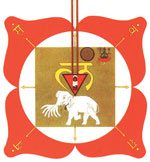 The Symbolism of the Mooladhara Chakra
The Symbolism of the Mooladhara Chakra
This chakra is represented by a lotus flower with four petals, each coloured deep crimson. The four petals symbolise the four corners of the world. They are associated with the sound vibrations of VAM, ŚAM, SHAM and SAM. These bijas begin on the upper right-hand petal and are read in a clockwise direction. The bija mantra is LAM.
This chakra is governed by the element earth, and its symbol is a yellow square in the centre of the lotus, representing the earth or foundation.
Within this square there is an elephant, Airavata, with seven trunks. These represent the Sapta Dhatu, the seven physical minerals that are vital for the body to function as described in Ayurveda. The elephant represents the physicality of matter and is symbolic of great strength and stability. The collar that he wears represents our false bondage to matter. His whiteness symbolises divinity within matter.
Riding on the elephant’s back, in the centre of the square, is a deep red inverted triangle, a symbol of the creative energy or shakti. The orientation of the inverted triangle represents divine power coming from a higher level to a lower one.
While kundalini is asleep in Mooladhara, she is depicted as a snake, usually a cobra, coiled three and a half times around a smoky grey lingam within the triangle. The three and a half coils present the form of the Om mantra. These three coils are the three states of existence and experience; conscious, subconscious and unconscious; jagrat, swapna and sushupti i.e. waking, dream and deep sleep; objective experience, subjective experience and non-experience; past, present and future. The three coils also represent the three qualities of nature, prakriti or Shakti – tamas, rajas and sattwa. The half coil represents that which is beyond the play of nature, turiya or the fourth dimension which includes any other dimension beyond the third. The smoky lingam around which kundalini is coiled is the subtle body or sukshma sharira, also known as the astral body, but its ill-defined, smoky qualities indicates that the inner consciousness is obscured in the changing realities of the three realms of experience.
In an unaware individual the kundalini has her head downward, but in the yogi the head is lifted up as she begins to awaken. When the kundalini serpent wakes up she should rise through sushumna, until she is perfectly straight from the tip of her tail, anchored in Mooladhara, to the top of the head which fills the skull. It indicates pervading consciousness which is not limited by any influence or subject to any modification.
The eight arrows pointing out of the chakra in every direction represent the many directions life may take. They designate our basic, neutral life energy which is sometimes called kundalini. This energy is free to be used for anything we choose. For instance, we use it to work, play, love others, engage in sexual behaviour, and to fuel our emotions, to name a few. However, most of us have no idea how to consciously harness it. When we do learn how to do that, we can use it to power our spiritual development and to withdraw it form harmful activities.
A crescent moon symbolises the divine source of all life.
The colour red symbolises passion, confidence and intensity.
The Deities of the First Chakra
Brahma – The child Brahma has five faces which express aspects of universality, omniscience, and omnipotence. This youthful deity reminds us the consciousness of this chakra is immature. The mala is like a rosary of 108 beads. It is used with a mantra which keeps the mind focused. The staff symbolises the spine, which is the physical channel for the life-force. Its triple prongs symbolise the three aspects of this current. Brahma makes a gesture which dispels fear when sincerity, intent and humility are present. The gourd contains a liquid which quenches spiritual thirst.
Dakini – The goddess Dakini represents the female aspect of energy manifest. The sword represents the powers of discrimination. Choosing between alternatives is a daily event. The skull on the staff represents the empty mind which makes space for new ideas. The drinking cup represents the waters of life. The spear demands accuracy, skill and co-ordination of mind and body if the thrower is to hit the target.

